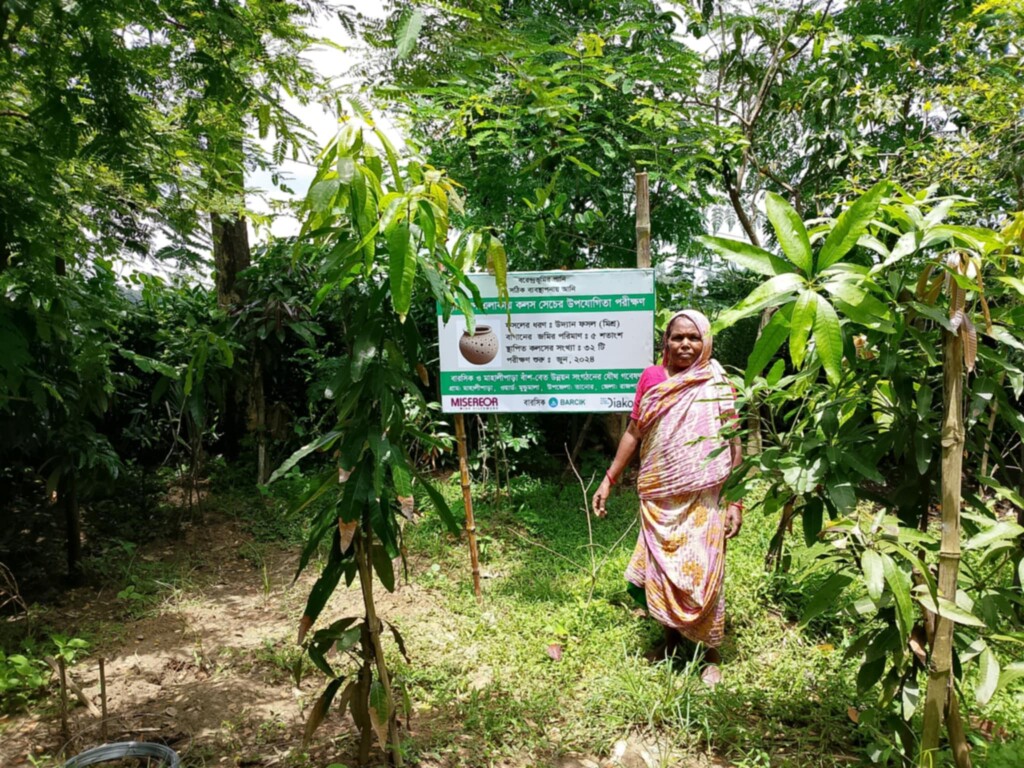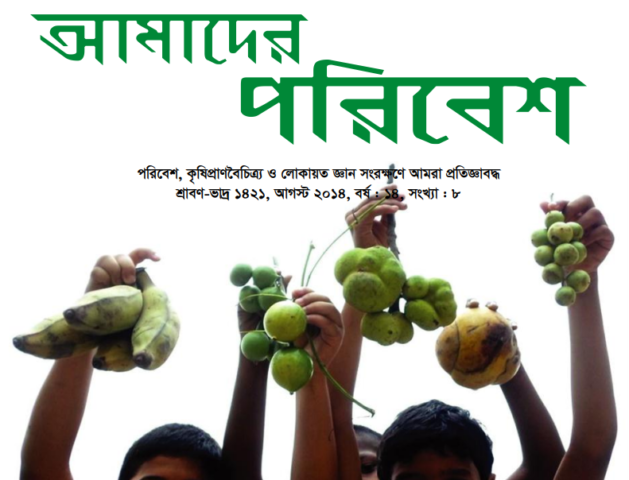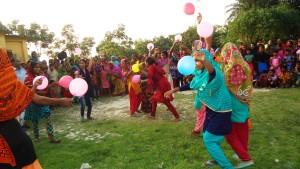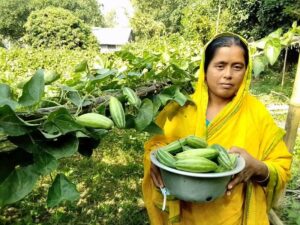Amreto Kumar Sarkar, BARCIK Tanore Resource Centre, Rajshahi
North-west Barind tract in Bangladesh, prone to severe drought, receives significantly less rainfall compared to other areas in Bangladesh. The reddish and yellowish clay soils here, often dry with low moisture retention, exacerbate water scarcity, making crop cultivation challenging both in fields and home gardens.
The Mondumala area in Tanore Upazila, Rajshahi, is particularly affected by extreme drought. The steadily declining groundwater level has created a crisis, forcing locals to fetch water from distant deep tube wells, as hand-operated tube wells are no longer viable. This water crisis has made it increasingly difficult for the marginalized population to cultivate fruits and vegetables in their home gardens.
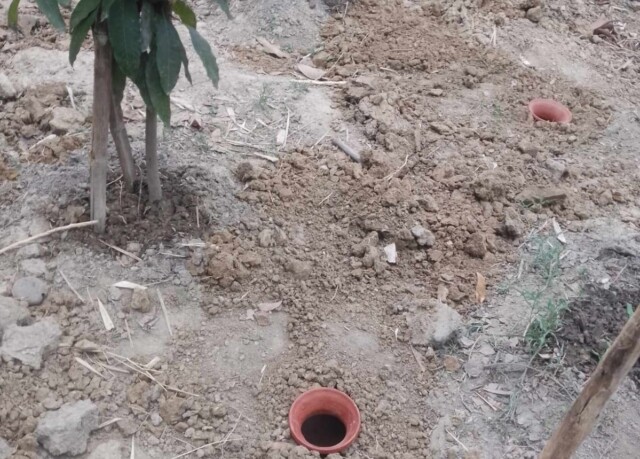
Pitcher irrigation, an ancient yet highly efficient system, offers a solution. Widely used in arid and semi-arid regions, it is particularly well-suited for small farmers in the northwestern Barind tract of Bangladesh. This system may help to address the growing water crisis by bringing more unirrigated areas under cultivation. In this irrigation system small pitchers are often preferred due to their cost-effectiveness. Water seeps out of a buried perforated pitcher directly into the root zone of crops through the pressure gradient across the pitcher walls, making it invaluable for land restoration in extremely dry conditions.
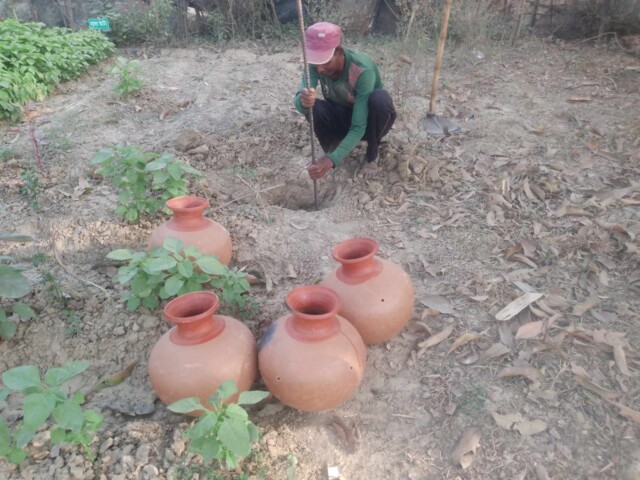
Since June 2024, indigenous farmers in collaboration with BARCIK have introduced pitcher irrigation in Mondumala village, Tanore Upazila, Rajshahi district in Bangladesh, aiming to produce mixed garden crops with minimal water usage. The experiment began on a 5-decimal plot in Fulmoni Soren’s model homestead lands, using 32 clay pitchers. Various seasonal vegetables, fruits and medicinal plants in Fulmoni’s mixed garden are irrigated using this system. Fruit trees like mango, jamun, jackfruit, sapota, guava, jujube, pomegranate, tamarind, and custard apple are strategically planted alongside leafy greens, red spinach, pointed gourd, ginger, chili, bitter gourd, turmeric, Indian spinach, bottle gourd, wax gourd and pumpkin.
In this system, a clay pitcher is perforated with 5-7 holes and buried 1.5 feet deep, with its mouth remaining above the soil surface. This allows for easy watering and enables rainwater to enter the pitcher. Water seeps into the soil through the holes, maintaining suitable soil moisture and reducing the need for additional irrigation. When the pitcher’s water level drops, irrigation can be completed with minimal water. This method is an excellent example of rainwater harvesting for irrigation. Fulmoni Soren shared that during this year’s heat wave, she was able to keep her vegetable plants healthy with less water compared to previous years, significantly reducing water wastage and eliminating dependency on external irrigation.
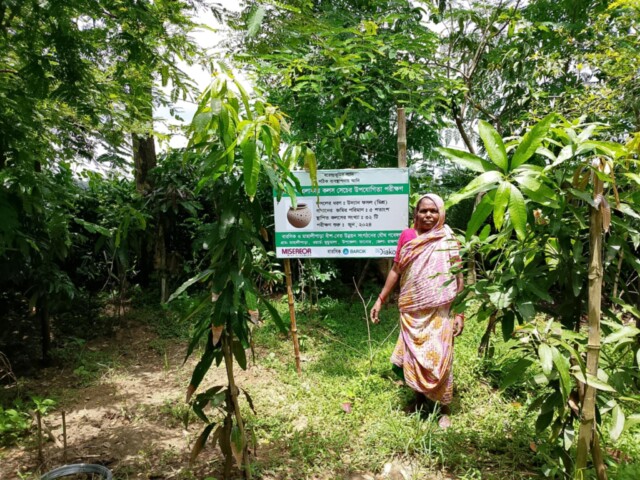
The clay pitcher irrigation system in Barind tract shows how traditional methods can solve modern water challenges. BARCIK’s collaboration with farmers like Fulmoni Soren highlights that agro-ecological practice can conserve water and empower communities. These small innovations offer hope for thriving in water-scarce areas, ensuring food security and resilience.
Translated by ABM Touhidul Alam

